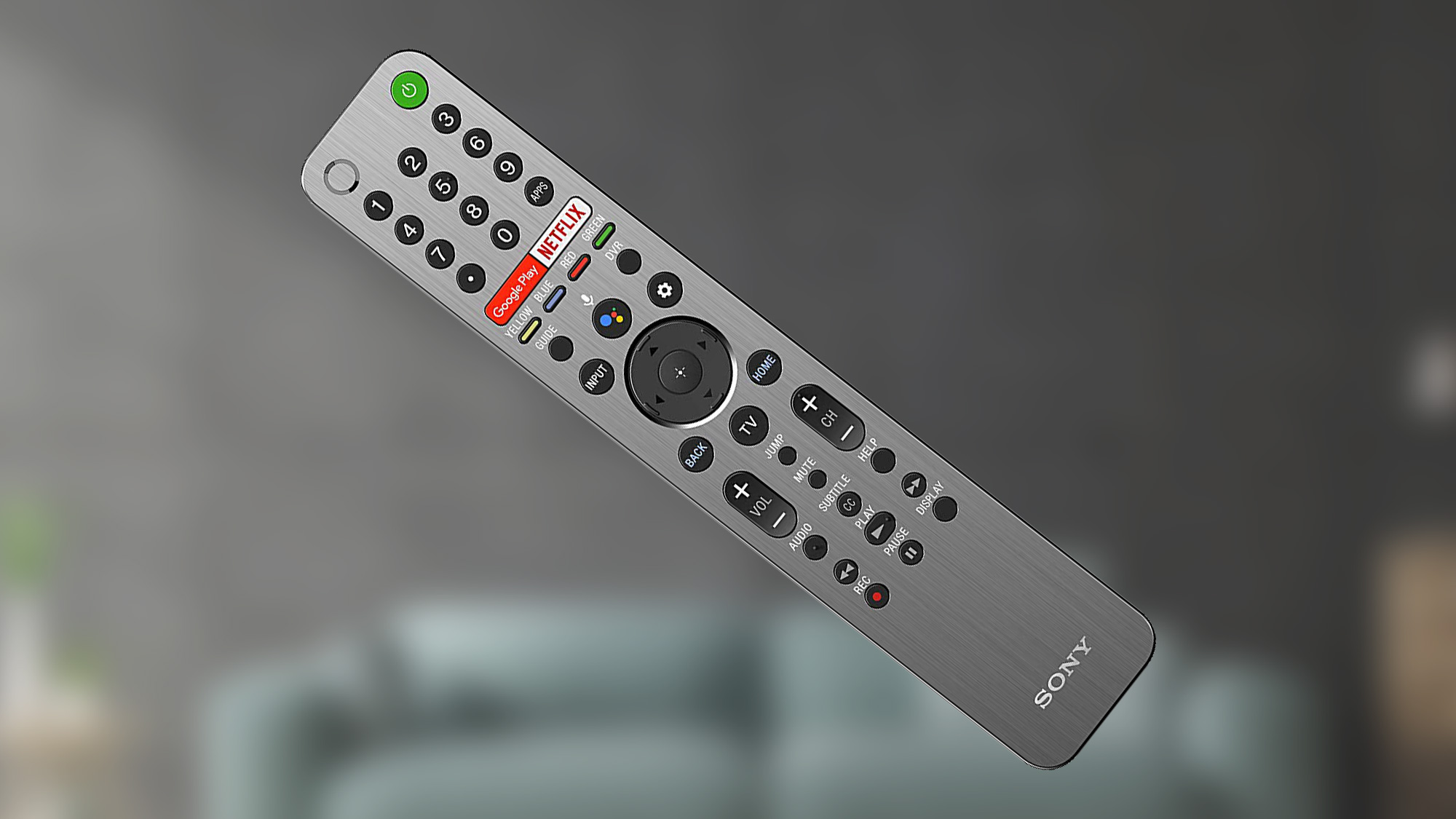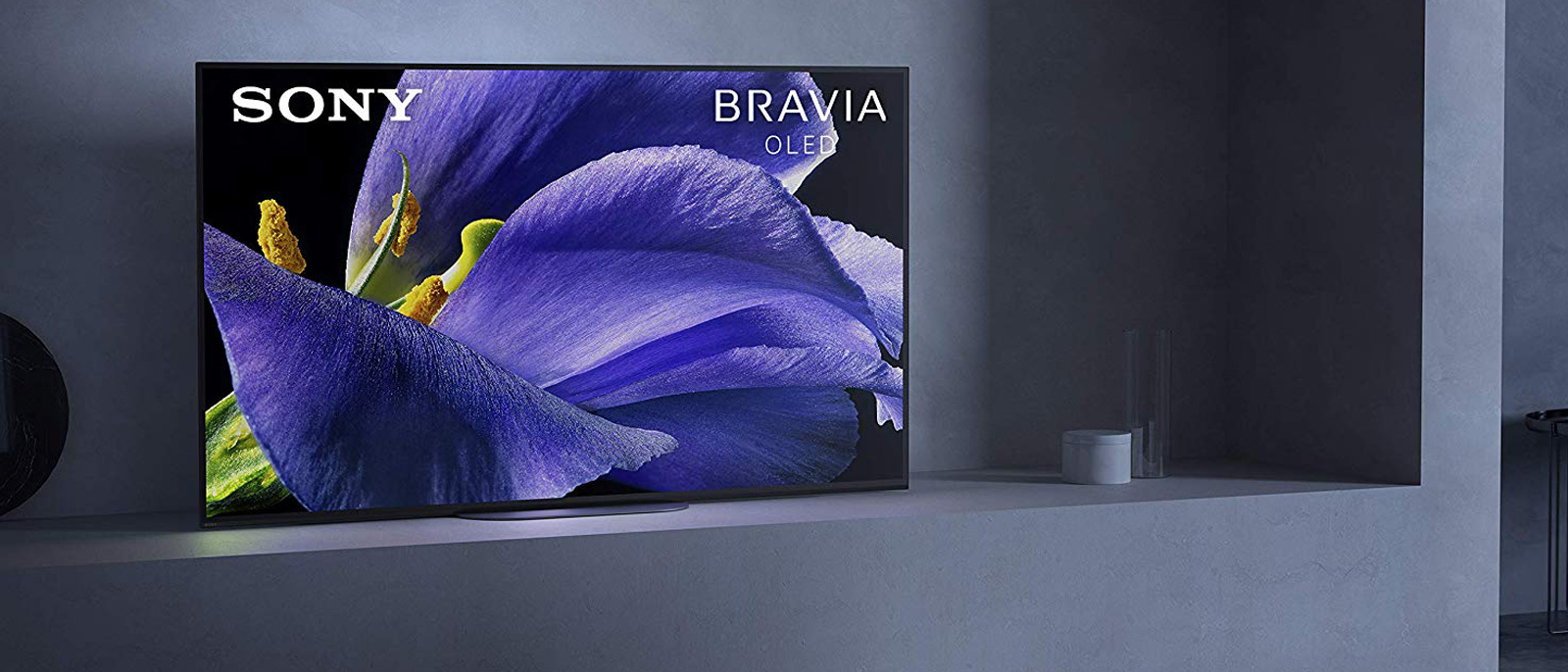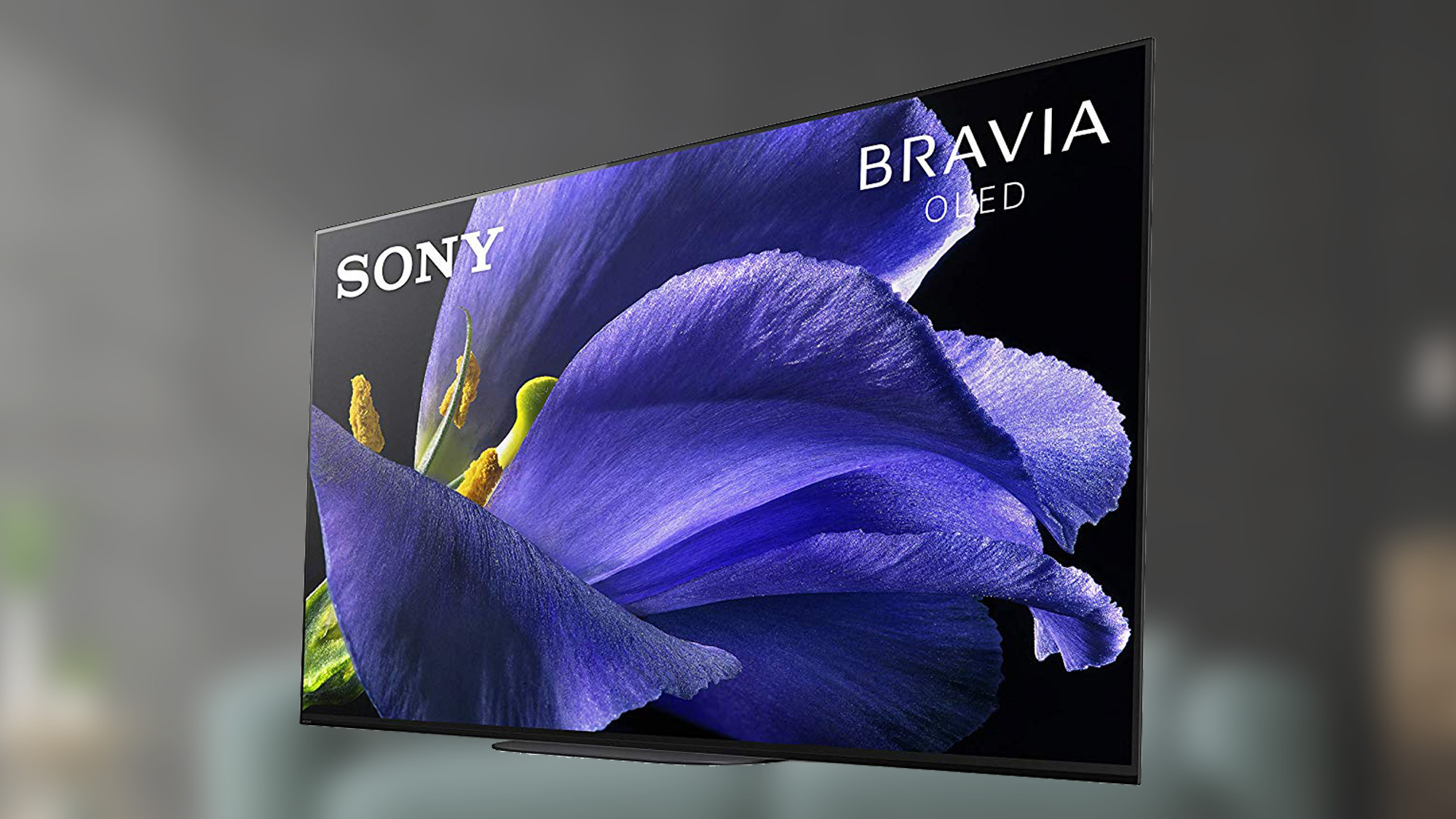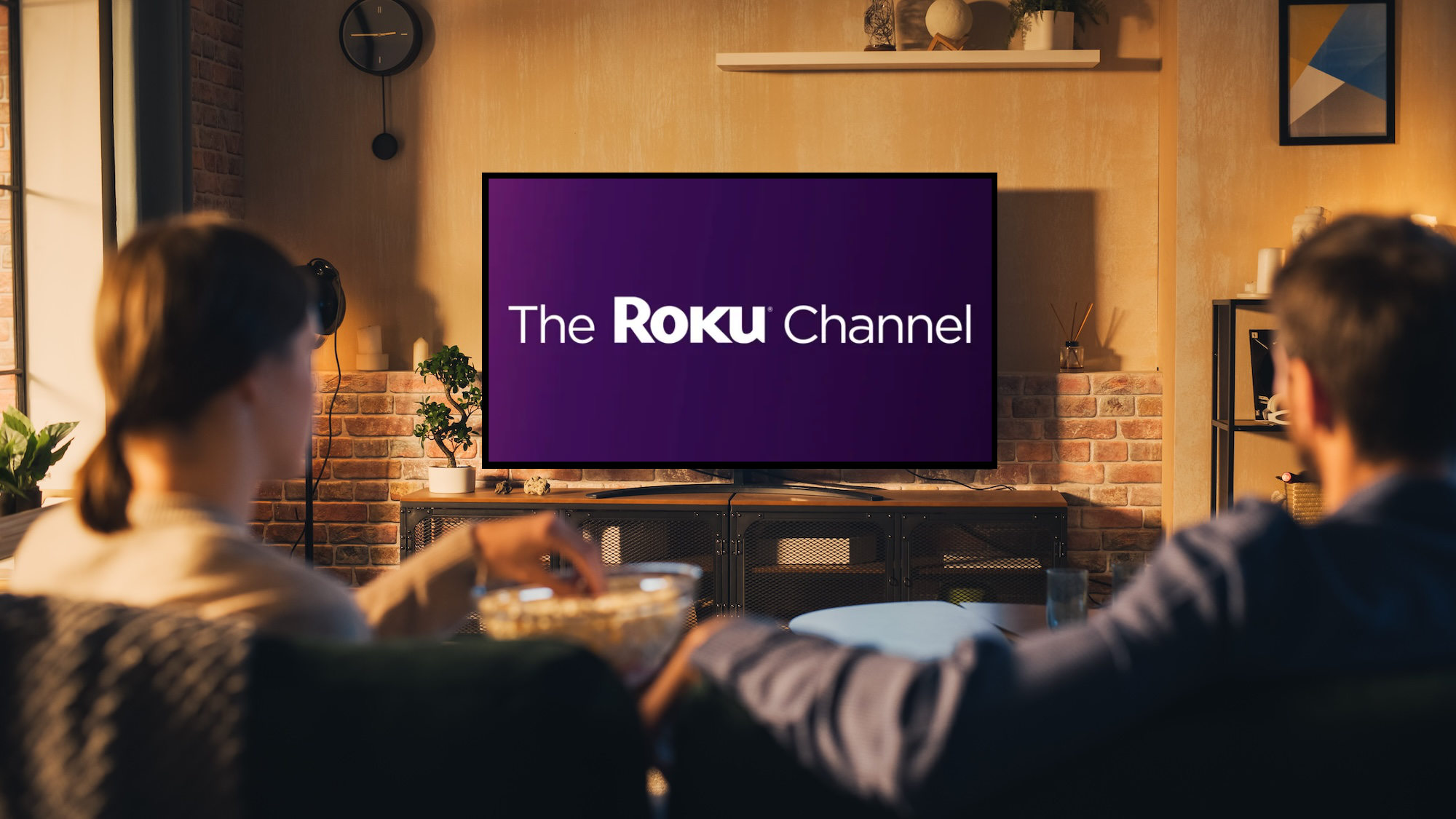Tom's Guide Verdict
The Sony Master Series A9G OLED is a top-notch 4K smart TV and one of the best consumer products out there. But is the marginal advantage over competitors worth the outsize difference in price?
Pros
- +
Superb performance with excellent picture and sound
- +
Refined design
- +
Improved remote control
- +
Best version of Android TV yet
Cons
- -
Very expensive
- -
Some features disabled by default
Why you can trust Tom's Guide
The Sony Master Series A9G OLED TV ($3,499) is the best smart 4K TV that Sony offers. With an excellent OLED picture, an inspiring sound-from-display audio system and a refined design that extends from the TV cabinet to the remote control, this is one of the best consumer products on the market. It's high price may make you do a double take, but this is a truly premium 4K smart TV experience.
But is it worth the extra expense when that premium price is significantly higher than those for similarly excellent competitors? The Sony A9G isn't the only OLED TV on the market, and it's not the only set to offer superb picture performance and sound. Even as one of the best TVs, it faces stiff competition from LG. Here’s how the Sony A9G stacks up.
Sony Master Series A9G OLED specs
| Price | $3,499 |
| Screen size | 65 inches |
| Resolution | 3840 x 2160 |
| HDR | HDR10, HLG, Dolby Vision |
| Refresh rate | 120 Hz |
| Ports | 4 HDMI, 3 USB |
| Audio | Acoustic Surface Audio+ (actuator x2, subwoofer x2) |
| Smart TV software | Android TV 8 |
| Size | 57 x 32.8 x 1.6 inches [w/o stand] |
| Weight | 46.7 pounds [w/o stand] |
Sony Master Series A9G OLED price and availability
For our review, we selected the most popular model in the Master Series A9G lineup, the 65-inch XBR-65A9G. But it's one of three models under the A9G model line, with a smaller, 55-inch and a larger, 77-inch size also for sale.
Aside from the differences in screen size, all three models feature the same assortment of ports and the same processing hardware, and they deliver the same impressive sound. Since the picture, sound and smart TV experiences will be otherwise identical between the different A9G OLED models, our recommendations apply to all three. In fact, it's one of the best 55-inch TVs you can buy.
Sony Master Series A9G OLED design
The Master Series A9G is Sony's best 4K TV, and it shows, from the stand that puts the display nearly flush with the table to the back panel of the A9G's chassis, which is covered in a checkerboard design, the same pattern that covers the back of Sony's Z9G 8K TV. It's a simple, yet sophisticated design, and it looks great while also stripping away anything that might clutter or distract from the gorgeous OLED display panel.
But perhaps what I liked most about the set was that, unlike the previous Sony Master Series A9F OLED or the Bravia A1E OLED before it, the 2019 model doesn't have the giant, easel-back integrated stand or the subwoofer seen on those older models. The result is a TV that is much easier to assemble and install, and the design allows for a more traditional vertical screen position, instead of the angled lean used in years past.
The TV itself is trimmer and sleeker than its predecessors, measuring just 57 x 32.8 x 1.6 inches and weighing 46.7 pounds. The design is also surprisingly sturdy for an OLED that at certain points is barely thicker than the glass of the display. It also features built-in cable management, with a cover to hide the panel of ports and connections, as well as cable routing and a second cover built in to the TV stand.
Get instant access to breaking news, the hottest reviews, great deals and helpful tips.
The combination of excellent video processing and the extremely well-implemented OLED panel makes for some of the best performance we've seen all year.
The Sony A9G’s stand uses a more traditional pedestal design, but that's not an entirely apt description, since the term pedestal implies some elevation. Instead, the flat base of the stand measures a fraction of an inch tall, placing the A9G's large OLED panel nearly flush with the table or stand it's set on. One reason this model can use this unusual design is that there are no downward-firing speakers. Thanks to Sony's unique Acoustic Surface Audio+ system, which uses the glass panel of the display as the vibrational surface for the TV's speakers, there's no need for a gap so that sound can be issued from the TV and reflected out into the room.
Finally, you can also hang the TV on the wall, as the set will work with any 300 x 300mm VESA mount. Sony also offers its own wall-mount bracket, the SU-WL855 ($248), which sits closer to the wall and offers adjustable positioning and has a proprietary bracket mount that is supposed to be easier to use than the standard VESA mounts.
Sony Master Series A9G OLED ports
The ports and connectors on the A9G are divided between two separate panels on the back of the set. The most accessible, a left-facing input panel, offers a single HDMI port, two USB ports, a 3.5mm jack for headphones, a similar 3.5 mm jack for composite video and pin connectors for wiring up a center speaker.
The second input panel is set farther in on the back panel, and recessed, with downward-facing ports. There, you'll find three additional HDMI ports, including one HDMI eARC connection for soundbars, as well as a third USB port, an optical digital-audio connection, an RF connector for antenna and an Ethernet port. That combination of rear-mounted, recessed panel with downward-facing ports is less convenient for connecting and disconnecting equipment, but it means the cables can be neatly hidden with a snap-on cover.
For wireless connectivity, the A9G is equipped with 802.11ac Wi-Fi and Bluetooth 4.2 for wireless audio; it also features a built-in Google Chromecast for content sharing from a smartphone or tablet.
Sony Master Series A9G OLED performance
When it comes to picture quality, the Sony A9F OLED is the cream of the crop. The OLED panel is precisely tuned, and paired with Sony's Picture Processor X1 Ultimate, it's the best offered by the company for 4K sets. And the combination of excellent video processing and an extremely well-implemented OLED panel make for some of the best performance we've seen all year.
The A9G offers excellent color reproduction, with a color gamut of 127.7% of the Rec. 709 color space. That's not particularly surprising, since OLED panels routinely deliver better than 100% in color gamut tests — the LG C9 OLED (132.1%) and last year's Sony A9F OLED (130.8%) both offered similar performance — and all outperform the likes of the LCD-based Samsung Q90 QLED (99.8%).
This was especially clear when watching clips from Planet Earth II, as scenes of tropical islands were lush and vibrant, with dense green foliage, brilliant blue oceans and white sandy beaches. Another scene of lizards crawling across rocks and sand was not only richly detailed, but also offered such variation in the many similar shades of gray and brown that even stone was distinct in a shot that would be very drab on a lesser TV.
Color accuracy is also very good, with the TV achieving a Delta-E rating of 2.7 (closer to zero is better). While that doesn't make this set quite as precise as the Samsung Q90 QLED (1.5) or the LG C9 OLED (1.9), it is an improvement over the score from last year's Sony A9F OLED (3.5) and still manages to make the A9G one of the best-looking displays we've seen all year.
When I was watching Creed II, a sun-drenched workout montage in the desert was filled with bright blue skies, vibrant orange flames, and an array of colors and tones. Whether it was the perfect blue of the sky or the subtle skin tones of close-up faces, the color looked excellent.
High-dynamic-range content also gets some love, with support for most major HDR formats, including HDR10, hybrid-log gamma (HLG) and Dolby Vision. This set also supports the IMax Enhanced format, a Sony-exclusive format that has its own standards for color, contrast and picture clarity.
The A9G's HDR performance is superb, thanks to the pixel-perfect lighting offered on OLED displays. In the lead-up to the big fight in Creed II, as the boxers made their way through shadowy hallways and emerged to light shows and pyrotechnic displays, the real range of HDR capability was on display. The brightness of flames and sparks glowed against the darkened arena. And as Adonis Creed's entrance was announced with a laser light show, the OLED panel transitioned from bright light to pitch black with ease. While LCD sets may offer slightly better brightness, the overall impact of HDR content is easiest to see with OLED's perfect blacks and brilliant brights.
Lastly, Sony's TVs offer a special Netflix-calibrated mode. This preset is designed to display Netflix shows with the same color and brightness balance as the streaming gurus at Netflix HQ use when fine-tuning their series.
Sony Master Series A9G OLED gaming support
The Sony A9F OLED offers 4K gaming at 60 Hz, with broad support for every format offered by the Xbox One X. Gaming support includes both 4K and HDR10 support, as well as 4K and HDR10 clips and screenshots for capturing gameplay. For streaming TV and movies, the A9G offers full 10-bit support at 24, 50 and 60 Hz, as well as support for both HDR10 and Dolby Vision.
This set also delivers respectable responsiveness, with a lag time of 26.8 milliseconds. That's a slight improvement over the previous Sony A9F OLED's time (27.5 ms) and only slightly slower than the showings from the LG C9 OLED (21.2 ms) and the Samsung Q90 QLED TV (24 ms).
My only complaint about Sony's gaming support is that, as we've seen on past Sony TVs, the full potential of your TV is locked away until you dig through the settings and enable enhanced format support in the HDMI signal-format settings. Why Sony hides this capability away in the labyrinth of arcane settings I do not know, but once you enable it, you'll see support for 10-bit color, HDR10 gaming and additional frame rates.
Sony Master Series A9G OLED audio
The A9G's sound is impressive in more ways than one. First, it stands out from a design and technology perspective, thanks to Sony's Acoustic Surface Audio+ sound, which uses a pair of 20-watt actuators and a pair of 10-watt subwoofers behind the glass of the OLED panel, effectively turning the entire panel into the vibrational surface of a speaker. The results are stunning, with sound that emanates directly from the subjects on screen, lending a new level of realism to dialogue and sound effects.
But the quality of the sound produced is superb, with crystal-clear audio and deep, rich bass. When I listened to The Glitch Mob's "Bad Wings," I was pleased to hear real heft to the low, droning bass line, and everything from the fine synthesizer fills to the ethereal vocals that were layered in sounded clear and distinct.
Sony Master Series A9G OLED smart features
The Sony A9G is outfitted with the latest version of Android TV (version 8.0, code-named Oreo), and the result is one of the best smart-TV experiences available. The interface is easy to use, with rows of tiled apps and recommended content. The home screen includes ready-to-play selections for primary apps, like Netflix and YouTube, and the integration with Google's Play store offers one of the best app selections around.
Google Assistant is built in, with microphone support through the TV and support for all of the same Google Home commands as a dedicated smart speaker provides, alongside content search. If yours is an Amazon household, you can also pair an Alexa-enabled device with the TV for voice interaction.
The other great Google capability that's built in is Chromecast, which offers dead-simple sharing of content and apps between the TV and users' phones and tablets.
Sony adds some additional smarts for home theater wonks, as well, with a built-in calibration mode. While you'll still need to provide your own laptop, scope and pattern generator — the same gear we use to test TVs — if you test and calibrate TVs using CalMAN software, you can have the corrections applied automatically, saving yourself a lot of time and hassle in the calibration process.
Sony Master Series A9G OLED remote control
I am thrilled to say that the Sony A9G's remote control is excellent. The 2019 sets get a redesigned remote that may be the biggest year-over-year improvement of any feature on the TV, replacing the much-maligned (and deservedly so) remote offered on Sony's 2018 models.

The new remote design keeps the same overall layout, with buttons for numbers, contextual buttons for menus, a ring-shaped directional pad, basic smart-TV navigation controls for home, back, settings, input and live TV, along with media-playback controls and buttons for adjusting volume and changing the channel.
However, the layout is vastly improved thanks to smaller buttons with easy-to-read labels. The result of the less cluttered look is a remote control that is easier to navigate. And it's an improvement, whether you can look at the remote or not, as the nice, round buttons are easy to distinguish by feel even in the dark while you're watching a movie. The remote also has a slimmer overall profile, a brushed-metal face, and an improved backside that is both more comfortable to hold and easier to take off when you need to replace the batteries.
Bottom line
The Sony Master Series A9G OLED TV is not only an excellent smart TV; it's also the best-looking, best-sounding TV on the market. The OLED display is superb, with rich color and deep blacks, excellent HDR support, and great overall performance. The sound emanates right from the screen, offering beautiful sound quality with deeper immersion and no need to add a soundbar. This set still has its quirks, like the need to enable several features for full gaming support, but even past rough spots have been polished out, like the remote, which has transformed into one of our favorite remote controls.
The big downside here is the price, which is dramatically higher than those for competing premium 4K TVs. The Samsung Q90 QLED ($2,199) offers excellent quality and sound, albeit without the OLED display. The LG C9 OLED ($1,496), on the other hand, can go toe to toe with the Sony in terms of pristine quality on an OLED panel, and the LG set sells for less than half the price of the Sony model. The LG C9 is definitely the better value, but with the Sony's fantastic sound and great Android interface, the Sony Master Series A9G OLED is the better TV — it just costs an arm and a leg for that slightly better experience.
Brian Westover is currently Lead Analyst, PCs and Hardware at PCMag. Until recently, however, he was Senior Editor at Tom's Guide, where he led the site's TV coverage for several years, reviewing scores of sets and writing about everything from 8K to HDR to HDMI 2.1. He also put his computing knowledge to good use by reviewing many PCs and Mac devices, and also led our router and home networking coverage. Prior to joining Tom's Guide, he wrote for TopTenReviews and PCMag.








